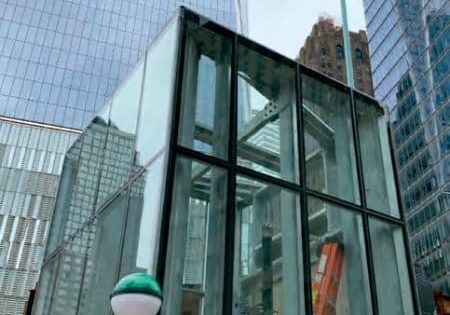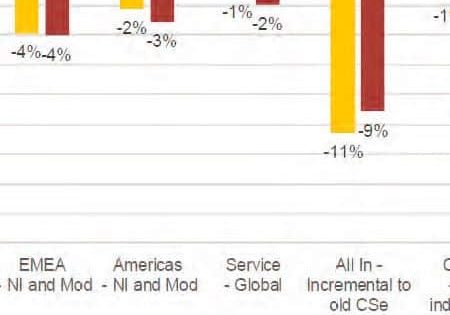Update on Emergency Use of Elevators
Jun 1, 2020
Clarifying OEO requirements in the recently released A17.1-2019/B44:19
by David McColl
The use of elevators during building emergencies continues to be a topic of interest and debate. Code requirements are evolving as the number of buildings using elevators for occupant evacuation increases, and building designers, authorities, elevator manufacturers and life safety system providers gain experience. Two buildings with Occupant Evacuation Elevators (OEEs) are already in operation in San Francisco, and more new buildings are currently under construction or at earlier stages of the development process. As experience has increased, so have questions and discussion about operation and building interfaces, leading to this evolution.
The ASME A17.1-2019/CSA B44:19 Safety Code for Elevators and Escalators was recently published and contains many updates to the requirements for Occupant Evacuation Operation (OEO), most of which are clarifications of or elaborations on the existing requirements in Section 2.27.11, first published in the 2013 edition.
Before describing the new code updates, what follows is a brief summary of the development and operation of OEO. Your author wrote an article describing the details of OEO (“Use of Elevators During Emergencies,” ELEVATOR WORLD, November 2015), so a detailed description will not be repeated here.
OEO was developed by a multidisciplinary task group that performed an extensive hazard analysis to develop numerous corrective actions and recommendations to address building and elevator system risks identified during emergencies and incidents in various building types. The proposed corrective actions and recommendations from the analysis led to the elevator code proposals, which became OEO and building code and life safety code proposals, which enhanced the preexisting requirements for OEEs, as well as suggestions for human factors, considerations and building system design requirements, including the necessity for a fire safety and evacuation plan. OEO is a nonmandatory requirement required only when OEEs are provided.
Essentially, OEO is an automatic system to evacuate the “elevator evacuation zone,” which consists of the floor with an active alarm, the two floors immediately above the alarm floor and the two floors immediately below the alarm floor. Control signals to advise the elevator system which floors to evacuate are provided by the fire-alarm system, which reacts to fire alarm-initiating devices (FAIDs) not initiating Firefighters’ Emergency Operation (FEO); i.e., FAIDs not in the elevator lobby, machine rooms or hoistway. The elevators are immediately dispatched to the active alarm floor to answer multiple hall calls to evacuate the occupants at that floor and take passengers directly to the elevator discharge level, which is usually the main exit floor. The process continues until all hall calls at the active alarm floor are answered. Then, the elevators move to repeat the process at the other four floors.
Coordination with the fire/voice alarm system is critical to provide instructions to occupants. Estimated time of arrival for the next elevator is displayed so occupants can choose to wait or use exit stairs. Active signage at the elevator lobbies may inform occupants whether elevators are available for evacuation, or that elevators are not available, and stairs should be used for evacuation. There are additional features to enable the expansion of the evacuation zone if additional alarms are activated or, if necessary, to provide a full building evacuation.
Another feature of OEO is the provision of individual car fire recall. In a building without OEO, when FEO is activated, all cars in the group affected by the alarm or controlled by the Phase I switch are recalled. When OEO is provided, Phase I switches are provided for each car, in addition to the traditional group switch. This enables firefighters to choose to use one or more cars for firefighting operations, while the rest of the cars in the group continue to function on OEO. However, if an FAID that normally causes an automatic Phase I recall is activated, all cars in the group would recall, and OEO would be terminated. OEO would also be terminated when the fire-alarm system is reset.
The 2019 edition of the A17.1/B44 code brings the first revisions since OEO was initially published, with many improvements to the language in Section 2.27.11 and related requirements in Section 2.27.3. Updates include
these clarifications:
- Definition of “elevator discharge level” and introduction of “elevator evacuation zone” terminology
- An active FAID in one elevator group’s lobby shall recall only elevators associated with that lobby and not recall elevators that service the floor by a separate elevator lobby.
- The location for the instruction signage for the group fire recall switch
- Difference between OEO of A17.1/B44 and OEE of the building/life safety code
- Terminology when destination-oriented control systems are used for OEO
- Provision and labeling for car and group fire recall switches
- An individual elevator will return to OEO with the rest of the elevators in the group when removed from
- Phase I operation.
- The group fire recall switch cannot override the individual car fire recall switch when in the “ON” position, and the group fire recall switch is able to reset all cars in the group under the correct conditions.
- Elimination of unnecessary pressurization requirements, which are covered by the building code
- Where provided, position indicators at the elevator discharge level are to remain operative.
- Ensure coordination between the elevator system and
- fire-alarm system, including a status signal, and ensure no duplication or conflict with signal interface requirements of NFPA 72
- The messages for the car and lobby signage, including estimated time of arrival for the next elevator, plus examples
- Permit new technology to be used for allocating elevator service to a landing, such as based on number of people waiting at the landing
- How car movement, door operation and car and hall calls are handled during OEO
Another change in the 2019 edition of the A17.1/B44 code is the addition of Section 2.27.10, which addresses Fire Service Access Elevators (FSAEs). FSAEs are required by the International Building Code (IBC) in high-rise buildings (with an occupied floor more than 120 ft above the lowest level of fire-department vehicle access). Section 2.27.10 provides a reference to the IBC requirements (Section 3007) and requires a signal from the elevator system to the building system for lighting the hoistway when FEO is active.
The A17 Emergency Operations Committee continues to review OEO and FSAE requirements to implement improvements when necessary.
Get more of Elevator World. Sign up for our free e-newsletter.







